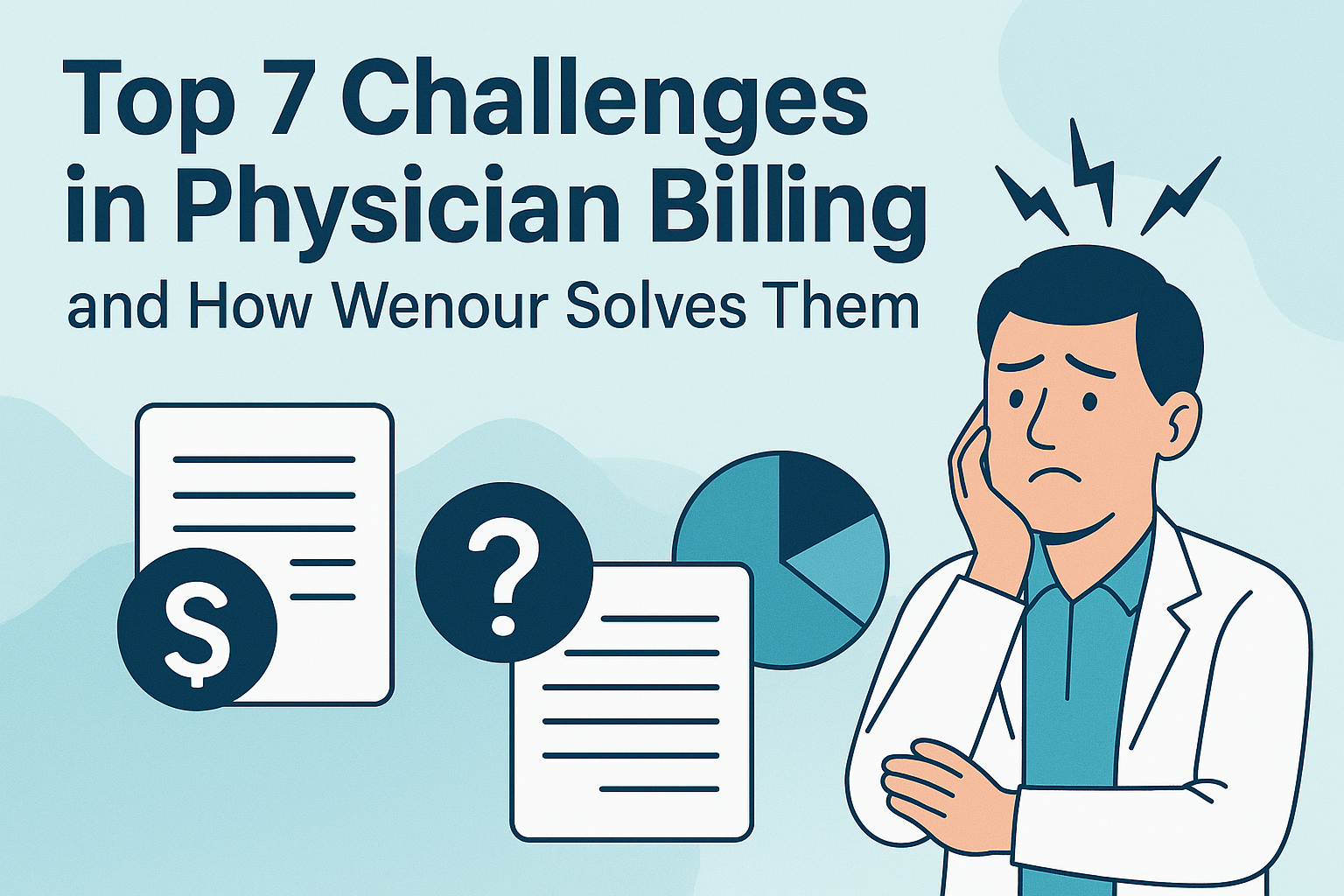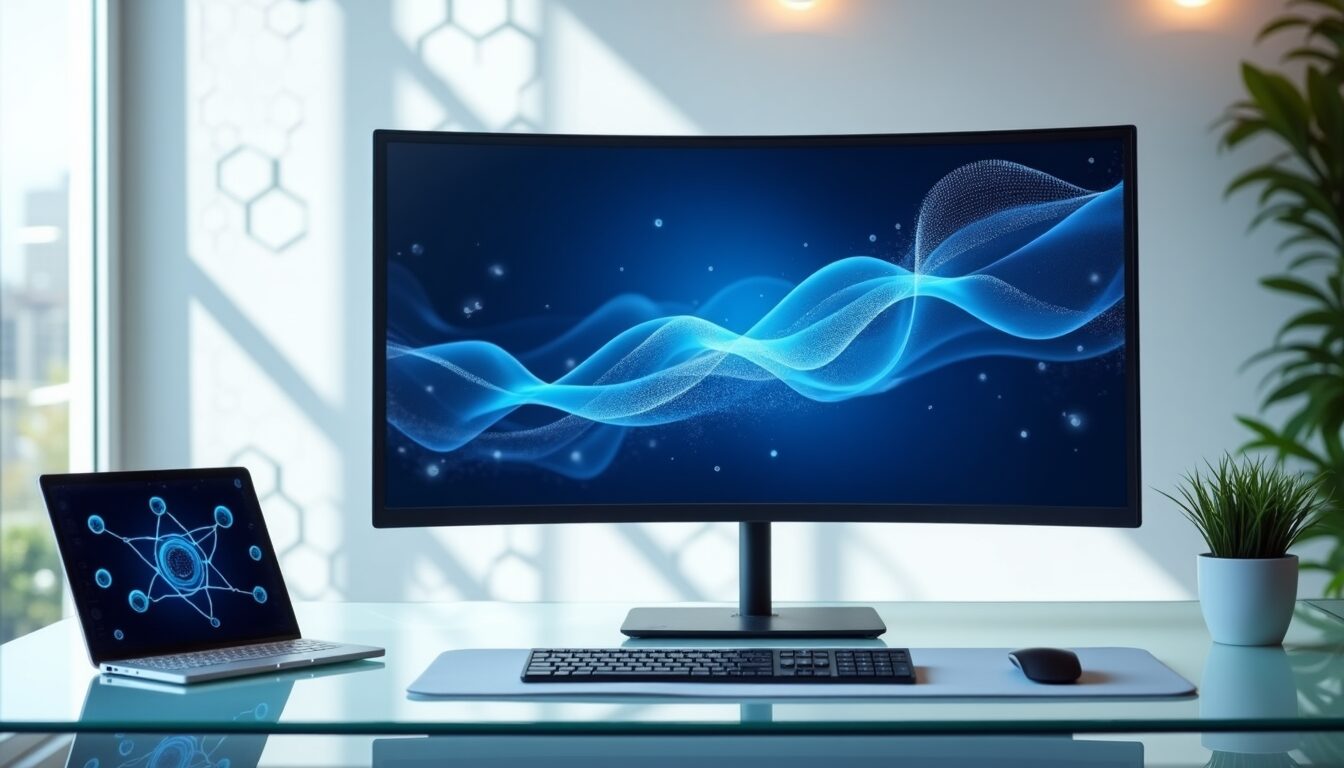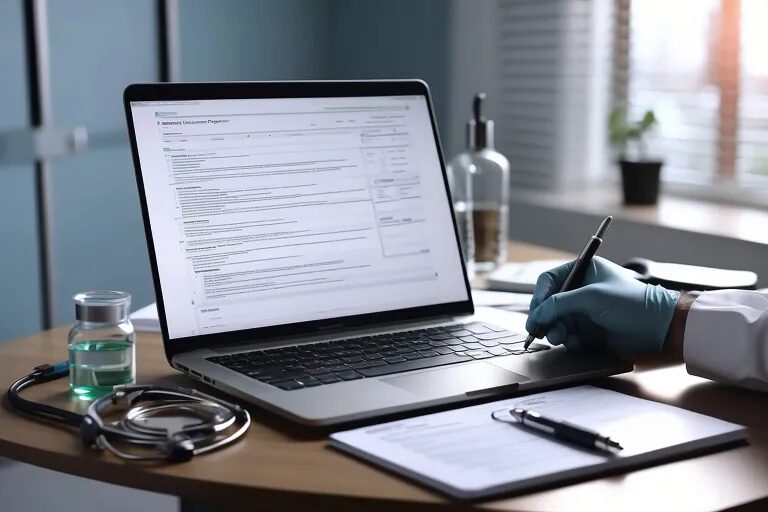
What’s New in E/M Codes for 2024?

As the healthcare industry continues to evolve, so do the intricacies of medical billing and coding, particularly the evaluation and management (E/M) codes that are fundamental to this process. The year 2024 introduces a host of updates and changes to E/M codes, signifying a major shift in how healthcare professionals and medical billing companies navigate patient care documentation and billing. These modifications not only reflect advances in medical practice but also aim to streamline the billing process and enhance the accuracy of reimbursements. Understanding these changes is crucial for all stakeholders in the healthcare industry, including providers, coders, and billers, to ensure the continued delivery of quality patient care while maintaining compliance and optimizing financial outcomes.
This article will delve into the nuances of the anticipated updates in E/M codes for 2024, discussing the specifics of time-based coding amendments, updated guidelines for multiple same-day E/M visits, and revisions pertinent to hospital inpatient or observation care services. Additionally, it will cover the adjustments in regulations for split or shared E/M visits, along with other significant updates that stand to impact the coding and billing landscape. By providing a comprehensive overview of the 2024 E/M code changes – including the e/m time based coding 2024, the modifications to the cpt e&m codes, and the 2024 e/m guidelines – this discussion aims to offer valuable insights and knowledge, equipping professionals with the tools needed to navigate these changes successfully.
Overview of E/M Changes for 2024
Key Modifications
In 2024, significant revisions are being made to the office visit codes 99202-99205 and 99212-99215. These codes will no longer specify a “range” in minutes. Instead, a “minimum time threshold” is introduced, which clinicians must meet or exceed when billing based on time. This change aligns with the broader shift in the E/M coding system, emphasizing clarity and preventing the previous ambiguities associated with time ranges.
For instance, the code 99202 will now require a minimum of 15 minutes of total service time, as opposed to the previous range of 15-29 minutes. This modification is part of a larger effort to standardize the language across different timed E/M codes and ensure consistency with Medicare policies, which do not permit the documentation of time ranges for certain services.
Further, the nursing facility care codes 99306 and 99307 have their time thresholds increased by five minutes, reflecting the need for extended care durations in these settings. This adjustment is crucial for healthcare providers working in nursing facilities, ensuring they meet the new, higher thresholds for patient care.
Impact on Practices
The removal of time ranges and the introduction of a minimum time requirement will have a profound impact on medical practices. It simplifies the coding process and reduces the potential for errors in billing, ultimately enhancing the accuracy of reimbursements. Medical billing companies, such as Wenour, play a pivotal role in assisting healthcare providers with these transitions. By offering updated training and support, Wenour ensures that practices can adapt to these changes efficiently, maintaining compliance with the new guidelines and optimizing their billing operations.
Moreover, the changes facilitate a more straightforward calculation of time spent on patient care, which is particularly beneficial in complex cases where multiple E/M services are provided on the same day. For example, if a patient is seen in two different settings on the same day, the total time or aggregated medical decision making (MDM) is used to determine the level of the single reported service. This approach prevents the double counting of time, promoting fair and accurate billing practices.
In summary, the 2024 E/M code modifications are designed to streamline the documentation and billing processes, reducing administrative burdens and fostering better compliance with healthcare regulations. These changes underscore the importance of continual education and adaptation within the healthcare billing and coding industry, areas where companies like Wenour provide indispensable support.
Time-Based Coding Amendments
New Minimum Time Thresholds
For 2024, the CPT Editorial Panel has refined the evaluation and management (E/M) visit codes by introducing a minimum time requirement when using time to select a level of E/M service. This change is designed to align with the Centers for Medicare & Medicaid Services (CMS) policies, which require a specific amount of time to be met or exceeded for each code level. For instance, the revised code for an office or outpatient visit for a new patient (99202) now specifies that 15 minutes of total service time must be met or exceeded on the date of the encounter.
Elimination of Time Ranges
The 2024 revisions also include the elimination of specific time ranges from the E/M codes 99202-99205 and 99212-99215. This modification simplifies the coding process by replacing the previous range with a single “minimum time threshold” that clinicians must meet or exceed when billing based on time. This adjustment prevents ambiguities associated with the old time ranges and ensures consistency with Medicare policies, which do not permit the documentation of time ranges for certain services.
Furthermore, the changes extend to hospital inpatient or observation care services, where time spent may be included in calculating total time on the date of the encounter when these services are not reported separately. This allows for a more comprehensive accounting of the care provided, particularly when multiple E/M services are delivered on the same day.
Medical billing companies, such as Wenour, are instrumental in helping healthcare providers adapt to these changes. By updating training programs and support systems, Wenour ensures that healthcare professionals can efficiently navigate the new coding requirements, thereby optimizing billing operations and compliance with the updated guidelines.
Updated Guidelines for Multiple Same-Day E/M Visits
Hospital and Nursing Facility Settings
In 2024, the guidelines for multiple same-day E/M visits within hospital and nursing facility settings have been updated to emphasize efficiency and accuracy in coding. When multiple visits occur on the same calendar date, whether in an inpatient hospital, observation, or nursing home setting, only a single E/M service should be reported. This approach prevents the duplication of service reporting, commonly referred to as “double dipping.” Additionally, if a patient is discharged and readmitted to the same facility on the same day, it is considered a single visit for E/M reporting purposes. However, if the discharge and readmission occur at different facilities, they are reported as two separate visits.
Office and Facility Services on the Same Day
For patients who receive care in both office and facility settings on the same day, clinicians are provided with two methods for selecting the code level. They can either use the aggregated medical decision making (MDM) over the course of the calendar date or sum the total time spent during the day according to the reporting guidelines. This flexibility allows healthcare providers to accurately reflect the complexity and time required for providing care in varied settings on the same day.
Furthermore, the updated guidelines also address the reporting of hospital inpatient or observation care services. Specifically, if a patient’s stay spans more than one calendar date, new instructions have been added to ensure that these services are reported correctly based on the total duration of care provided.
These changes underscore the importance of precise documentation and adherence to the updated guidelines to ensure compliance and optimize billing processes. Medical billing companies like Wenour play a crucial role in assisting healthcare providers with these transitions, offering updated training and support to navigate these coding requirements efficiently.
Hospital Inpatient or Observation Care Services
Changes to Reporting Codes
Prior to 2024, there were no specific guidelines in the CPT codebook regarding the length of stay necessary to report separate inpatient or observation E/M services and discharge management E/M codes. However, with the new guidelines introduced in 2024, it is now clear when to report codes 99234, 99235, and 99236. These codes are applicable only when a provider performs both the initial and discharge services on a single day and the patient’s stay exceeds 8 hours. For situations where a patient receives hospital inpatient or observation care for fewer than 8 hours, only codes 99221-99223 may be reported. Additionally, if a patient is admitted and discharged on different dates, the appropriate level of hospital E/M service is reported on the initial day and the appropriate discharge service on the subsequent day. It is important to note that discharge services can only be reported by the discharging provider.
Duration of Stay Considerations
The 2024 updates provide a structured approach to selecting E/M codes based on the duration of a patient’s stay in hospital inpatient or observation care. For patients admitted and discharged on the same calendar date with a stay of more than eight hours, the reporting codes are 99234, 99235, or 99236. If the stay is less than 8 hours, regardless of whether it spans across two calendar dates, the appropriate codes to report are 99221, 99222, and 99223. This structured reporting ensures that the billing process aligns with the actual services provided, enhancing the accuracy of medical billing practices.
For example, if a patient is admitted for observation at 2 AM and discharged at 12 PM on the same day following significant improvement, the provider would use E/M codes 99234-99236 based on either the medical decision-making or the total time spent with the patient. Conversely, if the patient was discharged in less than 8 hours, the applicable E/M codes would be 99221-99223.
Medical billing companies, such as Wenour, are crucial in helping healthcare providers navigate these changes. By offering updated training and support, Wenour ensures that healthcare professionals are well-equipped to implement these new guidelines effectively, thereby optimizing compliance and financial outcomes in medical billing.
Split or Shared E/M Visits
CMS Guidelines
Beginning January 1, 2024, the Centers for Medicare & Medicaid Services (CMS) will enforce new billing policies for split or shared evaluation and management (E/M) visits. These visits may be conducted partly by a physician and partly by a nonphysician practitioner (NPP) within the same group practice. The billing provider for such visits will be determined by who furnishes the “substantive portion” of the visit, defined as either more than half of the total time spent during the visit or a substantive part of the medical decision making (MDM).
Role of Substantive Portion in Reporting
The substantive portion of split or shared E/M visits can be quantified in two primary ways. It is either based on the majority (over half) of the total clinical care time spent on the visit by both the physician and the accompanying qualified healthcare professional (QHP), or it involves a significant portion of the medical decision making (MDM) process. In scenarios where MDM is used as the basis for the substantive portion, it is required that the physician or other QHP who bills for the visit must have made or approved the management plan for the patient, thereby assuming responsibility for the plan along with its inherent risks.
Other Significant Updates
Mental Health Providers
In 2024, mental and behavioral health providers will encounter minimal changes in the CPT codeset, primarily focusing on billing modifications rather than code adjustments. Notably, CMS has introduced two new psychotherapy HCPCS codes: G0017 and G0018. G0017 is designated for the first 60 minutes of psychotherapy for crisis furnished in applicable sites of service, excluding office settings, while G0018 covers each additional 30 minutes under the same conditions. These codes are also applicable for telehealth services, allowing for broader billing options in non-facility rates.
Telehealth Service Codes
The policy updates for 2024 include significant changes to telehealth service codes, particularly concerning the reimbursement rates when services are provided to patients in their homes. Providers are required to append modifier 95 to telehealth claims where services are rendered from a hospital and the patient is located at home. Additional place of service modifiers such as 02 for telehealth provided outside of the patient’s home or 10 for services within the home are necessary to ensure proper billing.
Furthermore, the introduction of various telehealth CPT codes aims to streamline the billing process for different scenarios involving telehealth. These include codes for office visits, outpatient services, consultations, and even emergency department services, ensuring comprehensive coverage and flexibility in telehealth delivery. Virtual check-ins and remote evaluations of recorded videos or images are also included, providing a framework for brief and extended telemedicine interactions.
Telemedicine services have expanded to include follow-up inpatient consultations and critical care consultations via telehealth, accommodating the needs of new and established patients alike. These services are crucial for maintaining continuous patient care and are supported by a range of CPT codes like 99091, 98970, and up to 99474, along with HCPCS codes such as G2061 and G2010, facilitating diverse medical services over telecommunication platforms.
Medical billing companies, such as Wenour, are vital in helping healthcare providers adapt to these new coding and billing standards. By updating training programs and support systems, Wenour ensures that healthcare professionals can efficiently navigate the new requirements, thereby optimizing billing operations and compliance with the updated guidelines.
Conclusion
As we navigate through the labyrinth of evolving E/M codes and their implications on the healthcare billing landscape in 2024, the updates and revisions underscore a transition towards more accurate and streamlined medical billing and documentation processes. These changes, from time-based coding amendments to revisions in codes for hospital inpatient or observation care services, aim not only to enhance the precision in coding and billing but also to support healthcare providers in delivering quality patient care with optimized financial outcomes. Significantly, these updates facilitate a smoother adaptation to the dynamic nature of healthcare practices, ensuring that all involved stakeholders, including providers, coders, and billers, are well-prepared to navigate these changes effectively.
In the midst of these transformations, the role of medical billing companies, particularly Wenour, becomes pivotal. Wenour’s commitment to updating training and support systems ensures that healthcare providers can seamlessly integrate these new guidelines into their practices. As we look forward to the implementation of these changes in 2024, it is evident that the support and resources provided by Wenour will be indispensable for those in the healthcare sector seeking to maintain compliance and optimize their billing operations. The ongoing evolution of E/M coding guidelines reflects the healthcare industry’s commitment to advancing patient care through improved billing accuracy, a goal that Wenour proudly supports.
FAQs
1. What updates have been made to E/M coding for the year 2024? For 2024, the CPT Editorial Panel has refined the evaluation and management (E/M) visit codes by removing specific time ranges previously used. Instead, a minimum time requirement has been introduced for selecting the level of E/M service based on time.
2. What are the notable changes in orthopedic coding for 2024? The key changes in orthopedic coding for 2024 include the introduction of four new codes for vertebral body tethering (VBT), which is used to treat adolescent idiopathic scoliosis. Additionally, there are clarifications on bunion correction and several new Category III codes.
3. Can you detail the changes in AAPC coding for 2024? In 2024, the AAPC updates include 230 new codes, 70 revised codes, and 49 codes being deleted. Notably, there are no changes to codes related to anesthesia, the integumentary system, the digestive system, the male genital system, or the auditory system.
4. What are the 2024 updates for radiology coding? The 2024 updates for radiology coding include 230 new codes, 70 revised codes, and 49 deleted codes as part of the annual Current Procedural Terminology (CPT) update. Additionally, the ICD-10-CM update brings 395 new diagnosis codes, with a significant portion focusing on new ways to document accidents and injuries.
5. Which section of surgery has the most new codes in 2024? In 2024, the Category III section of the CPT saw the most changes, with 83 new codes added, 32 codes deleted, and 12 codes revised. This section primarily covers surgical procedures, and it is recommended that coders review these changes thoroughly.
6. What are the new codes for caregiver training in CPT 2024? Starting January 1, 2024, three new CPT codes (97550, 97551, and 97552) have been introduced, focusing on caregiver education. These codes are designed for situations where caregiver training is necessary for the care of individual patients or groups, without the patient being present.























